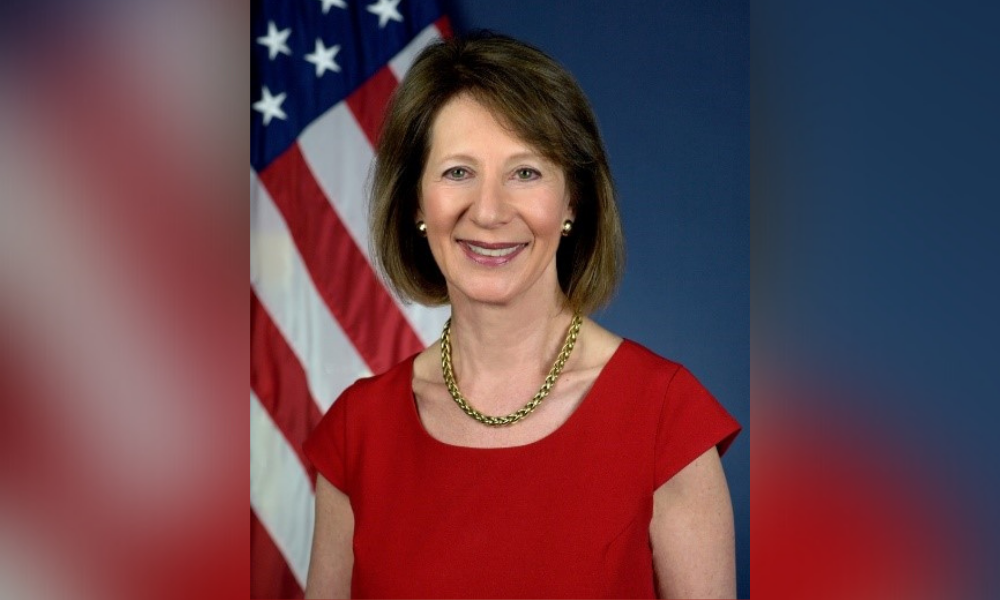Fed "still not taking it with the seriousness it deserves"

Rising interest rates and escalating gas prices have combined to yield conversation fodder around the collective water cooler across the US. Beyond the abstract though, many wonder of the implications of the double whammy.
Enter noted economist Diana Furchgott-Roth (pictured) to help navigate through the noise with expert insight. Adjunct professor of economics at George Washington University, she is former chief economist at the US Department of Labor and a former chief of staff of the Council of Economic Advisers.
First, the sobering reality: The Fed will raise the federal funds rate by 25 basis points and do the same another six times this year, and three or four times next year, she told Mortgage Professional America. However, those steps won’t be enough to stave off inflation, she said.
“With CPI [consumer price index] inflation running at almost 8%, PCE [personal consumption expenditures] inflation at 6.1%, and the Producer Price Index at 10%, this is not enough to get inflation out of the economy,” she said.
She provided a breakdown to buttress her point: “The federal funds rate should end 2022 at 2% and end 2023 at 2.75% if the Fed proceeds on schedule. Inflation is about 8%. Inflation has never been reduced when the rate of inflation is above the federal funds rate.”
Read more: Inflation hits 40-year high – what does that mean for mortgage rates?
She added that the Fed’s policy, with the announced rate increases, will remain one of extreme monetary accommodation with negative real interest rates. Federal Reserve Board chairman Jerome H. Powell on Monday appeared to agree, suggesting that higher increases may be in order if inflation does not subside, the economist noted.
“Still, the increase in the federal funds rate – although not eliminating inflation – will have effects on the economy,” Furchgott-Roth said. “Rates for borrowers – including holders of adjustable-rate mortgages, car loans and credit card balances – will rise.”
Moreover, it will become more expensive for corporations to borrow, and for the federal government and state and local governments to pay interest on their debt, she added. “The concerns of these borrowers, who are favored in an artificially low interest environment, as is the case now, need to be weighed against those of everyone else, she said.
For the average American, the double scourge of rising gas prices and grocery costs is most acutely felt via inflation, she noted. “Higher federal funds rates are needed to end inflation,” she said. “Last year the Fed called inflation ‘transitory,’ and it is still not taking it with the seriousness it deserves. The Fed projects that PCE inflation, now at 6%, will average 4.3% in 2022—up from a projection of 2.6% for 2022 at its December meeting. With inflation increasing, this doesn’t seem realistic.”
Read next: How will the Russia-Ukraine conflict affect the housing sector?
For maximum effect, she noted, President Biden needs to support the Fed by keeping down prices in the economy. “He should encourage energy producers in North America to produce more oil and gas and increase refining, roll back measures requiring high costs of labor in Federal infrastructure projects, and reform regulations to make it easier to produce and invest.”
Historically, the Fed’s traditional measure of inflation lies in the PCE price index, minus food and energy costs, that stood at 5.2% between January 2022 and last year’s comparable period. The level is the highest seen since April 1983. Meanwhile, CPI inflation rose to 7.9% in the 12 months ended in February at a level that has not occurred since 1982.
A confluence of forces stemming from the pandemic – including supply chain challenges – have combined to create the inflation that now besets the US. Many economists have now added the war in Ukraine as another factor that may raise prices even further.
Powell’s remarks about inflation this week prompted a significant drop in the stock market. The Dow fell by more than 200 points – 0.6% of its value – that ended a five-day bull market. Bond yields and tech stocks were hit hard, the former declining by 0.4% and the yield on the 10-year Treasury spiking to more than 2.3%. The latter was the highest level seen since May 2019.



